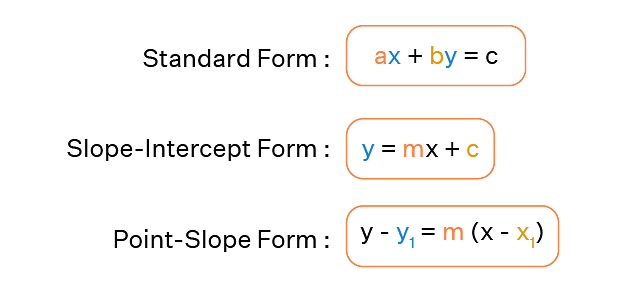If a variable line drawn through the intersection of the lines $\frac{x}{3} + \frac{y}{4} = 1$ and $\frac{x}{4} + \frac{y}{3} = 1$, meets the coordinate axes at $A$ and $B$, $(A \neq B)$, then the locus of the midpoint of $AB$ is :
- $6xy = 7(x +y)$
- $4(x+y)^2-28(x+y)+49=0$
- $7xy=6(x+y)$
- $14(x+y)^2-97(x+y)+168=0$
The Correct Option is C
Solution and Explanation
$L_{2} : 3x+4y-12=0$
$L_{1}+\lambda L_{2}=0$
$\left(4x+3y-12\right)+\lambda\left(3x+4y-12\right)=0$
$x\left(4+3\lambda-12\right)+y\left(3+4\lambda\right)-12\left(1+\lambda\right)=0$
Point $A\left(\frac{12\left(1+\lambda\right)}{4+3\lambda},0\right)$
Point $B\left(0, \frac{12\left(1+\lambda\right)}{3+4\lambda}\right)$
mid point $\Rightarrow h=\frac{6\left(1+\lambda\right)}{4+3\lambda}......\left(i\right)$
$k=\frac{6\left(1+\lambda\right)}{3+4\lambda} ......\left(ii\right)$
Eliminate ? from (i) and (ii) then
$6\left(h+k\right)=>hk$
$6\left(x+y\right)=>xy$
Top Questions on Straight lines
- The equation of a straight line is given by \( y = 3x + 4 \). What is the slope of the line?
- BITSAT - 2025
- Mathematics
- Straight lines
- Find the slope of the line passing through the points $ (1, 2) $ and $ (3, 6) $:
- BITSAT - 2025
- Mathematics
- Straight lines
- The equation of the line passing through the point \((1, 2)\) and perpendicular to the line \(3x + 4y - 12 = 0\) is:
- AP EAPCET - 2025
- Mathematics
- Straight lines
- Find the slope of the line perpendicular to the line $ 3x + 4y - 12 = 0 $.
- AP EAPCET - 2025
- Mathematics
- Straight lines
- The maximum area of a right-angled triangle with hypotenuse \( h \) is: (a) \( \frac{h^2}{2\sqrt{2}} \)
- VITEEE - 2024
- Mathematics
- Straight lines
Questions Asked in JEE Main exam
- A group 15 element forms \( d\pi - d\pi \) bond with transition metals. It also forms a hydride, which is the strongest base among the hydrides of other group members that form \( d\pi - d\pi \) bonds. The atomic number of the element is ________________________.
- JEE Main - 2025
- Chemical bonding and molecular structure
- Let \( M \) denote the set of all real matrices of order 3 x 3 and let \( S = \{-3, -2, -1, 1, 2\} \). Let
\( S_1 = \{A = [a_{ij}] \in M : A = A^T \text{ and } a_{ij} \in S, \forall i, j\} \),
\( S_2 = \{A = [a_{ij}] \in M : A = -A^T \text{ and } a_{ij} \in S, \forall i, j\} \),
\( S_3 = \{A = [a_{ij}] \in M : a_{11} + a_{22} + a_{33} = 0 \text{ and } a_{ij} \in S, \forall i, j\} \).
If \(n(S_1 \cup S_2 \cup S_3) = 125\), then \( \alpha \) equals:- JEE Main - 2025
- Linear Algebra
- Let the lines \[ 3x - 4y - \alpha = 0, \quad 8x - 11y - 33 = 0, \quad 2x - 3y + \lambda = 0 \] be concurrent. If the image of the point \( (1, 2) \) in the line \[ 2x - 3y + \lambda = 0 \text{ is } \left( \frac{57}{13}, \frac{-40}{13} \right), \text{ then } |\alpha \lambda| \text{ is equal to:} \]
- JEE Main - 2025
- Matrices and Determinants

In the first configuration (1) as shown in the figure, four identical charges \( q_0 \) are kept at the corners A, B, C and D of square of side length \( a \). In the second configuration (2), the same charges are shifted to mid points C, E, H, and F of the square. If \( K = \frac{1}{4\pi \epsilon_0} \), the difference between the potential energies of configuration (2) and (1) is given by:
- JEE Main - 2025
- Electromagnetic Field (EMF)
Given below are two statements:
Statement I:
 will undergo alkaline hydrolysis at a faster rate than
will undergo alkaline hydrolysis at a faster rate than 
Statement II:
In intramolecular substitution takes place first by involving lone pair of electrons on nitrogen.
intramolecular substitution takes place first by involving lone pair of electrons on nitrogen.
- JEE Main - 2025
- Organic Chemistry
Concepts Used:
Straight lines
A straight line is a line having the shortest distance between two points.
A straight line can be represented as an equation in various forms, as show in the image below:

The following are the many forms of the equation of the line that are presented in straight line-
1. Slope – Point Form
Assume P0(x0, y0) is a fixed point on a non-vertical line L with m as its slope. If P (x, y) is an arbitrary point on L, then the point (x, y) lies on the line with slope m through the fixed point (x0, y0) if and only if its coordinates fulfil the equation below.
y – y0 = m (x – x0)
2. Two – Point Form
Let's look at the line. L crosses between two places. P1(x1, y1) and P2(x2, y2) are general points on L, while P (x, y) is a general point on L. As a result, the three points P1, P2, and P are collinear, and it becomes
The slope of P2P = The slope of P1P2 , i.e.
\(\frac{y-y_1}{x-x_1} = \frac{y_2-y_1}{x_2-x_1}\)
Hence, the equation becomes:
y - y1 =\( \frac{y_2-y_1}{x_2-x_1} (x-x1)\)
3. Slope-Intercept Form
Assume that a line L with slope m intersects the y-axis at a distance c from the origin, and that the distance c is referred to as the line L's y-intercept. As a result, the coordinates of the spot on the y-axis where the line intersects are (0, c). As a result, the slope of the line L is m, and it passes through a fixed point (0, c). The equation of the line L thus obtained from the slope – point form is given by
y – c =m( x - 0 )
As a result, the point (x, y) on the line with slope m and y-intercept c lies on the line, if and only if
y = m x +c